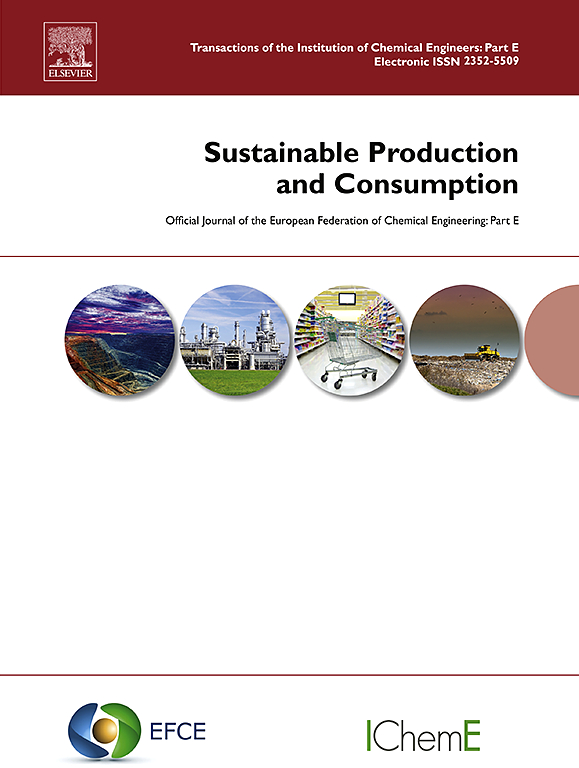Peeling the orange: Delving into life cycle indicators for water footprint, ecosystem services, and biodiversity for orange cultivation in Uruguay
IF 10.9
1区 环境科学与生态学
Q1 ENVIRONMENTAL STUDIES
引用次数: 0
Abstract
The relevance of certain environmental impacts on agricultural processes, such as water use and degradation, biodiversity loss, and effects on ecosystem services, is widely recognized by the Sustainable Development Goals. However, agricultural Life Cycle Assessments (LCAs), among others, those on citrus fruits, often neglect or only partially address these impacts. This study seeks to fill this gap by evaluating these newly developed impact categories using orange cultivation in Uruguay as a case study. Updated and regionalized methods based on both midpoint and endpoint indicators are applied in a comprehensive cradle-to-farm gate analysis using mass and area functional units. The assessment specifically evaluates the effects of water consumption and degradation, land occupation on ecosystem services across five distinct potentials, as well as the impacts on biodiversity of both land use and those associated with resource use and pollutant emissions. Irrigation is the main contributor to water consumption-related impacts, with scores of 1545.2 m3 eq.·ha−1 and 88.5 m3 eq.·tonne−1 for blue water scarcity. As for water degradation, the main hotspots are fertilizers on-field emissions and production, along with that of copper oxides and the maritime transport of inputs. The pollution deprivation potential is quantified, obtaining scores of 1.1 · 10−2 m3·ha−1 and 5.7 · 10−4 m3·tonne−1. Land occupation for orange cultivation is the critical stage for ecosystem services loss — although it positively affects groundwater regeneration. The scores for biodiversity loss due to land occupation are 4.4 · 10−7 PDF·ha−1 and 2.6 · 10−8 PDF·tonne−1. Regarding non-land use-related impacts on biodiversity loss, input transportation stands out due to its significant contribution to terrestrial ecotoxicity. Based on the results, suggested management practices are put forth to mitigate the environmental impacts. Furthermore, areas for potential methodological enhancement are identified. This study provides the first application of recently developed environmental indicators for agricultural LCAs to citrus fruit cultivation, aiming to boost the development of more comprehensive studies that consider critical environmental aspects of agricultural systems.
剥橘子:深入研究乌拉圭橙子种植的水足迹、生态系统服务和生物多样性的生命周期指标
可持续发展目标广泛认识到某些环境影响对农业过程的相关性,如用水和退化、生物多样性丧失以及对生态系统服务的影响。然而,农业生命周期评估(lca),尤其是对柑橘类水果的评估,往往忽视或仅部分解决这些影响。本研究试图通过评估这些新开发的影响类别来填补这一空白,并以乌拉圭的橙子种植为案例研究。基于中点和终点指标的更新和区域化方法应用于使用质量和面积功能单元的综合从摇篮到农场的大门分析。该评估具体评估了水的消耗和退化、土地占用对五个不同潜力的生态系统服务的影响,以及土地利用和与资源利用和污染物排放相关的对生物多样性的影响。灌溉是水资源消耗相关影响的主要因素,蓝水短缺的得分为1545.2立方米当量·公顷−1和88.5立方米当量·吨−1。在水的退化方面,主要的热点是化肥的田间排放和生产,以及氧化铜的排放和投入品的海上运输。污染剥夺潜力被量化,得分为1.1·10−2 m3·ha−1和5.7·10−4 m3·吨−1。柑橘种植占用土地是生态系统服务丧失的关键阶段,尽管它对地下水再生有积极影响。土地占用造成的生物多样性损失得分分别为4.4·10−7 PDF·ha−1和2.6·10−8 PDF·tonne−1。在对生物多样性丧失的非土地利用相关影响方面,投入品运输因其对陆地生态毒性的重大贡献而引人注目。在此基础上,提出了减轻环境影响的管理措施建议。此外,还确定了可能加强方法的领域。本研究首次将最近开发的农业LCAs环境指标应用于柑橘类水果种植,旨在促进考虑农业系统关键环境因素的更全面研究的发展。
本文章由计算机程序翻译,如有差异,请以英文原文为准。
求助全文
约1分钟内获得全文
求助全文
来源期刊

Sustainable Production and Consumption
Environmental Science-Environmental Engineering
CiteScore
17.40
自引率
7.40%
发文量
389
审稿时长
13 days
期刊介绍:
Sustainable production and consumption refers to the production and utilization of goods and services in a way that benefits society, is economically viable, and has minimal environmental impact throughout its entire lifespan. Our journal is dedicated to publishing top-notch interdisciplinary research and practical studies in this emerging field. We take a distinctive approach by examining the interplay between technology, consumption patterns, and policy to identify sustainable solutions for both production and consumption systems.
 求助内容:
求助内容: 应助结果提醒方式:
应助结果提醒方式:


